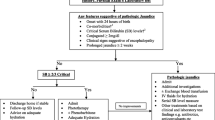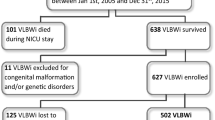Abstract
The study concentrates on estimating the magnitude of the effect of a single risk factor, maximum total serum bilirubin (TSB) in excess of 400 μmol/l (23.4 mg/dl), on the neurodevelopmental outcome of 50, singleton, Zimbabwean neonates at 1 year of age. At 1 year corrected age the Bayley Scales of Infant Development (BSID) was administered. Two infants died and five were lost to follow up. TSB was neither associated with birth weight nor with gestational age. Of 43 infants with a TSB >400 μmol/l (23.4 mg/dl),11(26%) scored abnormal on the BSID at 1 year of age and 5 (12%) infants developed the choreo-athetoid type of cerebral palsy.
Conclusion Infants with bilirubin levels between 400 and 500 μmol/l (23.4 and 29.2 mg/dl) who scored abnormal or suspect on the Bayley Scales of Infant Development were preterm or had haemolytic disease. All term infants without haemolysis and with bilirubin levels between 400 and 500 μmol/l (23.4 mg/dl–29.2 mg/dl) were normal at 1 year of age.
Similar content being viewed by others
Author information
Authors and Affiliations
Additional information
Received: 19 February 1998 / Accepted: 22 June 1998
Rights and permissions
About this article
Cite this article
Wolf, MJ., Wolf, B., Beunen, G. et al. Neurodevelopmental outcome at 1 year in Zimbabwean neonates with extreme hyperbilirubinaemia. Eur J Pediatr 158, 111–114 (1999). https://doi.org/10.1007/s004310051029
Issue Date:
DOI: https://doi.org/10.1007/s004310051029




